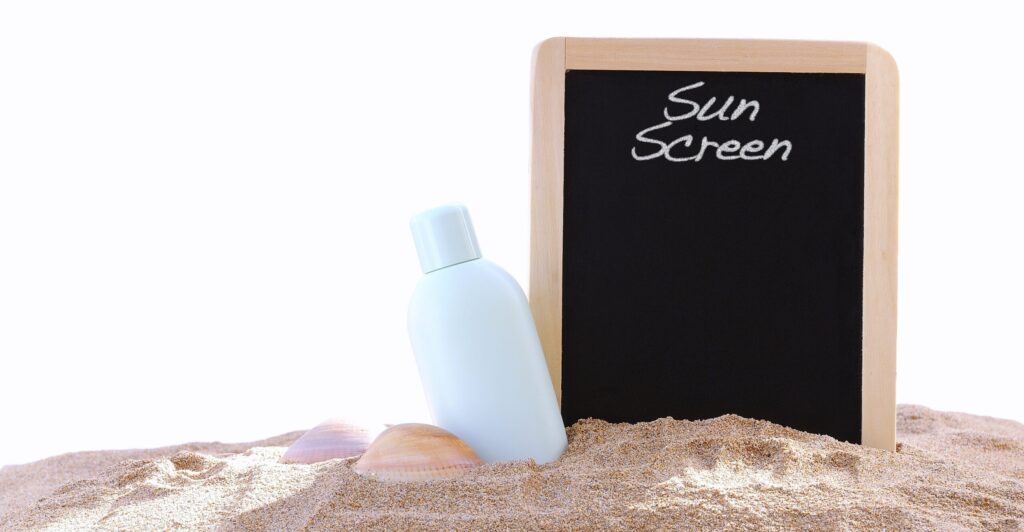Sunscreen is a crucial component of skincare, providing essential protection against the harmful effects of ultraviolet (UV) radiation. While the benefits of sunscreen are well-documented, concerns have emerged regarding its safety and potential adverse health effects. This blog will explore the benefits of sunscreen, appropriate usage for different age groups, and address concerns about its safety based on current research.
Benefits of Sunscreen
Preventing Sunburn
Sunscreen helps prevent sunburn, which is an acute reaction to excessive UV radiation. Sunburns not only cause immediate discomfort but also increase the risk of developing skin cancer later in life.
Anti-Aging Effects
Regular use of sunscreen can significantly reduce the signs of aging. UV radiation contributes to premature aging, known as photoaging, which manifests as wrinkles, fine lines, and loss of skin elasticity.
Preventing Sun Damage and Photoaging
Sunscreen protects the skin from UV-induced damage, preventing DNA damage, hyperpigmentation, and the breakdown of collagen and elastin fibers. This helps maintain a youthful and healthy skin appearance.
Decreasing the Risk of Skin Cancer
Consistent use of sunscreen reduces the risk of developing skin cancers, including melanoma, basal cell carcinoma (BCC), and squamous cell carcinoma (SCC). UV radiation is a major risk factor for these cancers, and sunscreen acts as a protective barrier.
Appropriate Age for Sunscreen Use
Infants
Sunscreen should not be used on infants younger than six months. Instead, physical sun protection methods like protective clothing and shade should be employed.
Children and Adults
For children six months and older, and adults, sunscreen use is recommended. Physical sunscreens, which contain mineral ingredients like zinc oxide and titanium dioxide, are often recommended for young children and individuals with sensitive skin due to their lower risk of causing skin irritation.
Types of Sunscreen: Physical vs. Chemical
- Physical Sunscreens: Also known as mineral sunscreens, these contain active ingredients like zinc oxide and titanium dioxide. They sit on the skin’s surface and reflect UV rays. They are generally recommended for young children and those with sensitive skin.
- Chemical Sunscreens: These contain organic (carbon-based) compounds like oxybenzone, avobenzone, and octinoxate. They absorb UV radiation and convert it into heat, which is then released from the skin.
Concerns About Sunscreen Safety
Many of the safety concerns are related to ingredients found primarily in chemical sunscreens. These concerns include:
Skin Irritation
Some individuals may experience skin irritation or allergic reactions to certain sunscreen ingredients, particularly chemical sunscreens. Symptoms can include redness, itching, and rash.
Endocrine Disorders and Hormonal Imbalances
There are concerns that some chemical sunscreen ingredients, such as oxybenzone and octinoxate, may act as endocrine disruptors. Endocrine disruptors can interfere with hormone function and potentially lead to hormonal imbalances, reproductive issues, and developmental problems.
Endometriosis and Fertility Issues
Research has suggested a potential link between certain sunscreen chemicals and endometriosis, a condition where tissue similar to the lining inside the uterus grows outside it. Additionally, concerns have been raised about these chemicals affecting fertility, although more research is needed to establish a definitive connection.
Nail and Hair Changes
While less common, some reports have indicated that certain sunscreen ingredients might affect the health of nails and hair, leading to brittleness or other changes.
Specific Ingredients Linked to Adverse Health Issues
- Oxybenzone: Linked to skin irritation, potential endocrine disruption, and hormonal imbalances.
- Octinoxate: Associated with endocrine disruption and potential reproductive issues.
- Avobenzone: Can cause allergic reactions, redness and irritation in some individuals.
- Octocrylene: Suspected of causing allergic reactions and potential endocrine disruption.
- Retinyl Palmitate: A derivative of vitamin A, retinyl palmitate has been scrutinized for its potential to form free radicals when exposed to UV radiation, which could lead to skin damage. Additionally, some studies suggest that retinyl palmitate might accelerate the development of skin tumors and lesions when applied to the skin in the presence of sunlight. However, these findings are not universally accepted, and further research is needed to establish a clear connection.
Studies Linking Sunscreen Use to Increased Rates of Skin Cancer
There is overwhelming evidence that sunscreen protects the skin from sun and UV rays and is a highly effective strategy for decreasing the risk of skin cancer. However, a few studies have suggested a correlation between sunscreen use and higher rates of certain skin cancers. These findings are often explained by confounding factors:
- Inadequate Application: Many people do not apply enough sunscreen or reapply it as needed, leading to insufficient protection.
- Prolonged Sun Exposure: Some individuals may use sunscreen to stay in the sun longer, increasing their overall UV exposure despite using sunscreen.
- Behavioral Factors: Sunscreen users might engage in riskier sun behaviors, such as spending more time in direct sunlight.
Dermatologists emphasize that when used correctly, sunscreen is a key tool in preventing skin cancer. The benefits of reducing UV exposure far outweigh the potential risks associated with sunscreen ingredients.
Conclusion
Sunscreen is a vital component of a comprehensive sun protection strategy. It provides numerous benefits, including preventing sunburn, reducing signs of aging, protecting against sun damage, and lowering the risk of skin cancer. While there are concerns about certain ingredients in chemical sunscreens, the evidence supporting these concerns is limited. Physical sunscreens are a good alternative for those worried about chemical exposure. Regardless of the type of sunscreen used, proper application and reapplication, combined with other sun protection measures, are essential for effective protection against harmful UV radiation. If you have concerns about sunscreen safety or experience adverse reactions, Dr. Adam Mamelak can provide personalized advice and recommendations.

